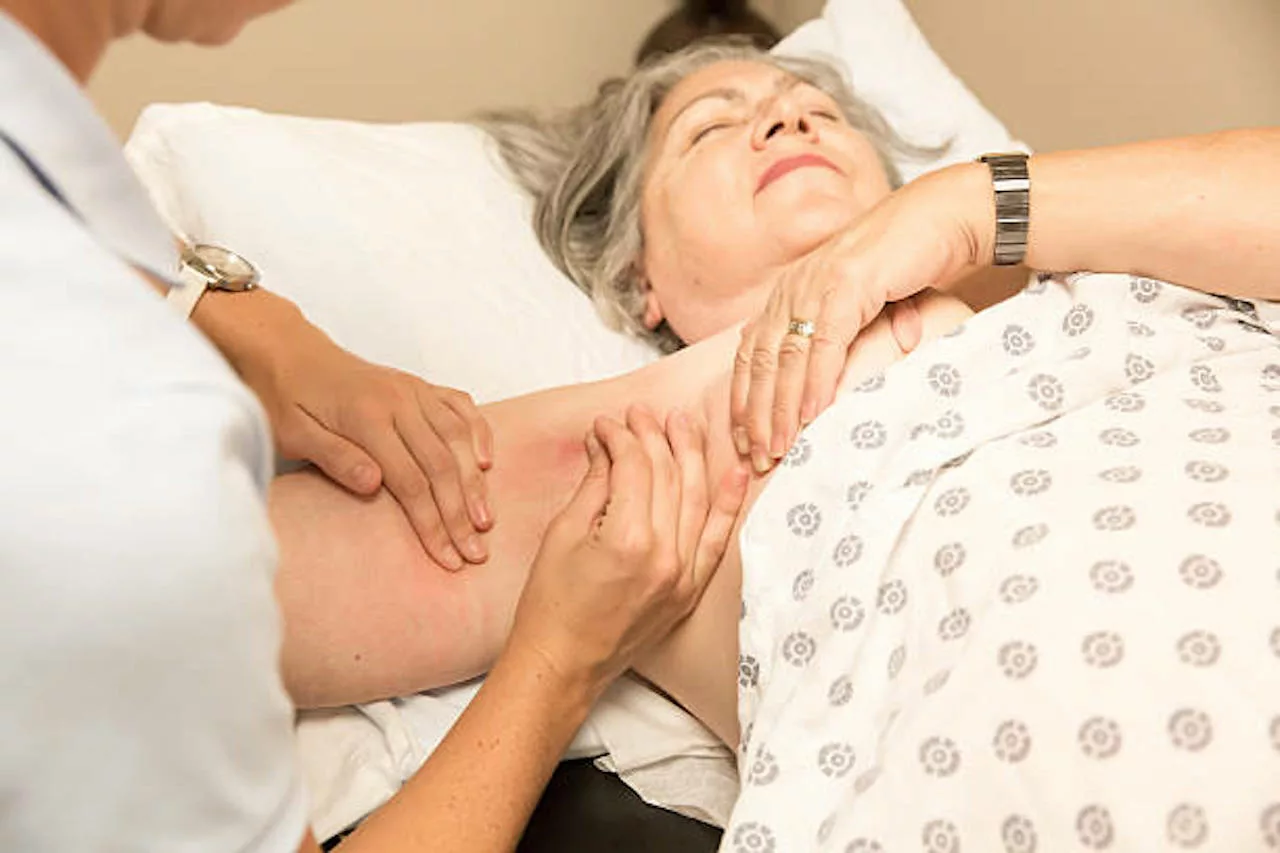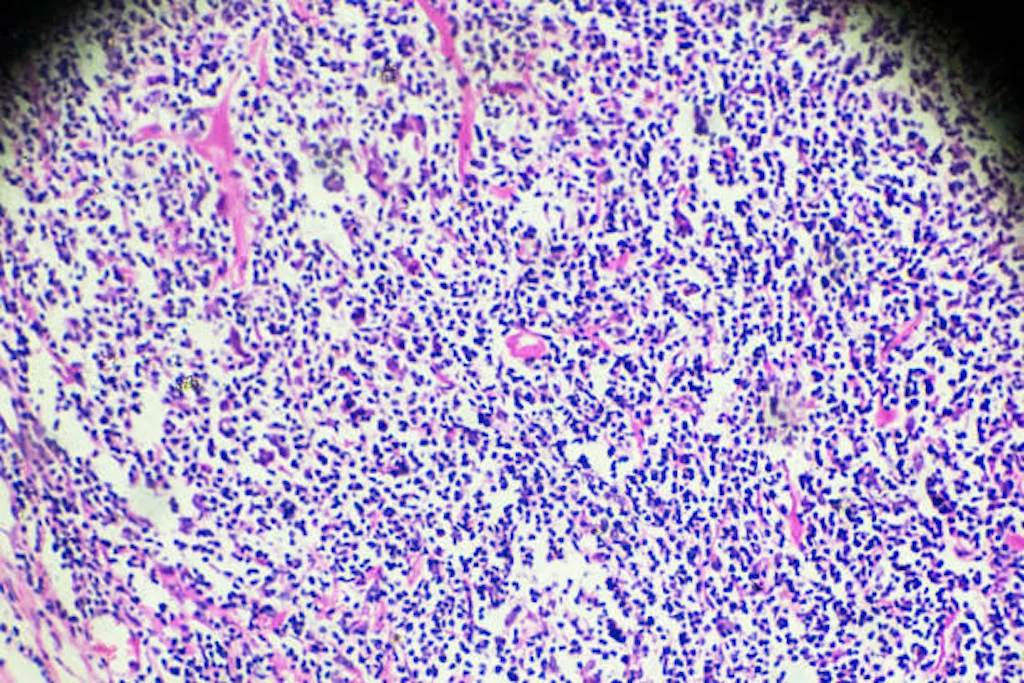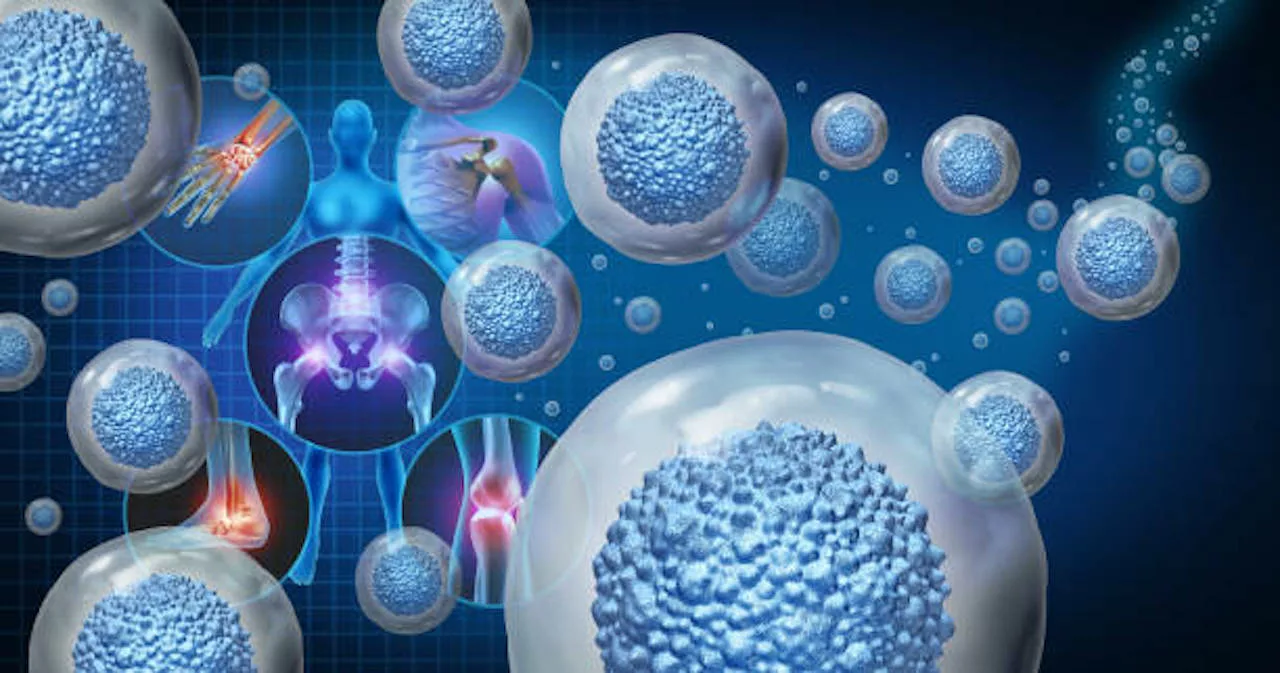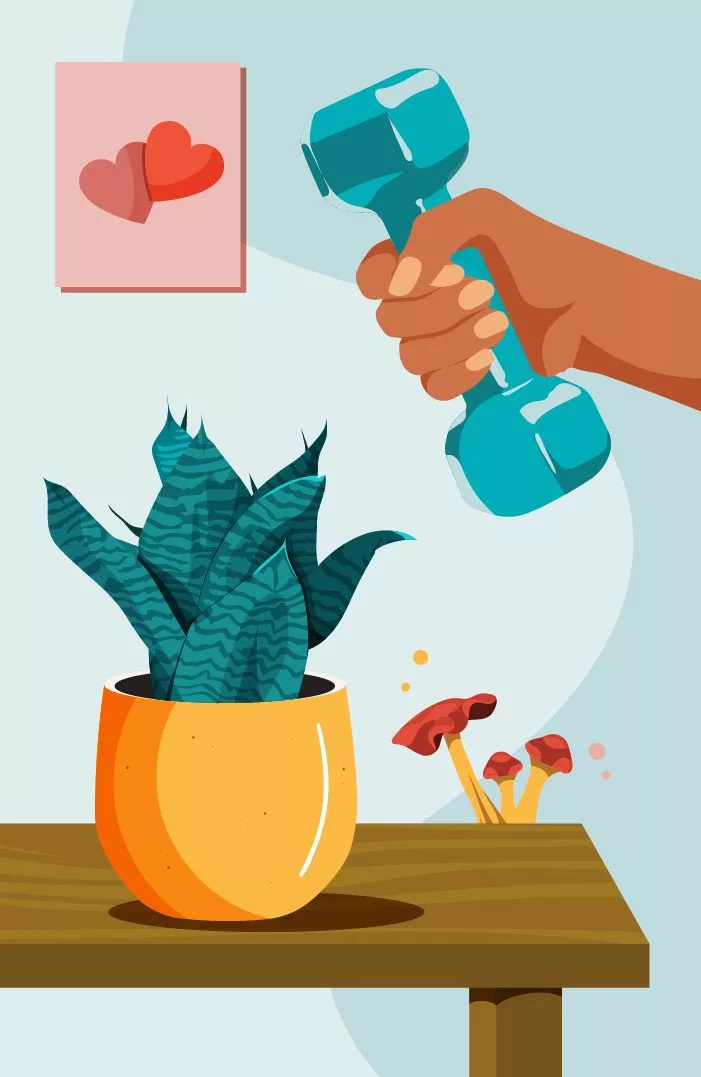Classical Hodgkin lymphoma is a kind of blood cancer that starts in your body’s lymph nodes. It begins in special white blood cells called B lymphocytes and can spread through the body if not treated early.
What is Classical Hodgkin Lymphoma?
Classical Hodgkin lymphoma is named after Dr. Thomas Hodgkin. He first described the condition in 1832 when he noticed a pattern of swollen lymph nodes in several patients. Classical Hodgkin lymphoma starts when B lymphocytes become abnormal and grow uncontrollably. These cancerous cells gather in your lymph nodes and form painless lumps in your neck, chest, or armpits.
Although classical Hodgkin lymphoma is relatively rare, it is considered one of the most treatable cancers, particularly when diagnosed early. Around 8,500 new cases are diagnosed annually in the United States alone. Names for classical Hodgkin lymphoma include:
- Hodgkin lymphoma
- Hodgkin’s lymphoma
- Hodgkin disease
- Hodgkin’s disease
- Malignant lymphoma, Hodgkin type
- Nodular sclerosis classical Hodgkin lymphoma
- Mixed cellularity classical Hodgkin lymphoma
- Lymphocyte-rich classical Hodgkin lymphoma
- Lymphocyte-depleted classical Hodgkin lymphoma1Armitage, J. O., Gale, R. P., & Jaffe, E. S. (2022). Lymphoma Nomenclature ‐ What’s in a name? British Journal of Haematology, 197(5), 539–543. https://doi.org/10.1111/bjh.18063
Causes of Classical Hodgkin Lymphoma
In classical Hodgkin lymphoma, the disease starts in your lymph nodes. A B lymphocyte, which usually helps fight infection, develops a genetic error for reasons that are still unknown. This abnormal cell turns into a Reed-Sternberg cell, which is the primary marker of the disease.
Reed-Sternberg cells can’t make antibodies and don’t die when cells are programmed to. Moreover, they release chemicals that attract other immune cells to the area. Instead of fighting the cancer, those cells gather around and create a system that helps the tumor grow. Most cancer comprises your immune cells surrounding a small number of cancer cells.2Aggarwal, P., & Faten Limaiem. (2025, February 24). Reed-Sternberg Cells. Nih.gov; StatPearls Publishing. https://www.ncbi.nlm.nih.gov/books/NBK542333/
Risk Factors for Classical Hodgkin Lymphoma
Researchers have found several risk factors that may make a person more likely to develop it. Knowing them can help you and your doctor stay alert to the early signs of classical Hodgkin lymphoma.
Epstein-Barr Virus:
In classical Hodgkin lymphoma, parts of the Epstein-Barr virus (a cause of mononucleosis) can be found in the Reed-Sternberg cells of about 25% of patients in the United States and up to 50% globally. About 1 in 1,000 people who’ve had mono may eventually develop Hodgkin lymphoma.
Age and Sex:
This cancer tends to affect young adults between 15 and 35 and adults over 55. This is known as a “bimodal” age distribution. It’s also slightly more common in men than in women, though both can be affected at any age.
Family History:
A family history of Hodgkin lymphoma may increase your risk, especially if a sibling or twin has had it. The lifetime risk is only around 0.6% for first-degree relatives, but it’s higher than in the general population.
Weakened Immune System:
When your body is immunocompromised, it’s easier for cancerous cells to grow and spread.. This includes people living with HIV, those who have undergone organ transplants, or people on long-term immunosuppressive medications.
Autoimmune Conditions:
People with autoimmune diseases ( e.g., rheumatoid arthritis, lupus, or ulcerative colitis) may also have an increased risk for classical Hodgkin lymphoma. Long-term inflammation, immunosuppressant use, and immune dysfunction are thought to contribute to the risk in these cases.
Living Conditions:
In developed countries, classical Hodgkin lymphoma is more common in young adults from higher socioeconomic backgrounds. In contrast, in some developing areas, it’s more frequently diagnosed in children. Here, it is often linked to early Epstein-Barr virus infection and overcrowded living conditions.
Environmental Exposures:
Although not fully proven, some studies suggest that chemical exposure, such as pesticides or industrial solvents, could slightly raise your risk.3Hatem Kaseb, & Babiker, H. M. (2023, June 26). Hodgkin Lymphoma. Nih.gov; StatPearls Publishing. https://www.ncbi.nlm.nih.gov/books/NBK499969/
Symptoms of Classical Hodgkin Lymphoma
Classical Hodgkin lymphoma often starts with something as simple as a swollen lymph node, but it can cause various symptoms as it progresses.
Swollen Lymph Nodes:
A swollen lymph node is the hallmark symptom of classical Hodgkin lymphoma. In about 80% of cases, the swelling is above the diaphragm, meaning in the upper body. Overall, you may feel a firm, painless lump:
- On the side of your neck
- Under your arm
- In your groin

B Symptoms:
About 40% of people with classical Hodgkin lymphoma have systemic symptoms, known as B symptoms. They suggest that the lymphoma is more active or advanced. These symptoms include:
- Unexplained weight loss (more than 10% of your body weight over 6 months)
- Persistent fever over 100.4°F (38°C) without infection
- Drenching night sweats, often soaking through your clothes or bedding
Chest Symptoms:
If the classical Hodgkin lymphoma affects lymph nodes in the chest, you might feel:
- Pressure or pain in your chest
- Cough that doesn’t go away
- Shortness of breath
- In some cases, especially with large tumors, this can lead to superior vena cava syndrome, where blood flow from the upper body is blocked, causing facial swelling and visible veins on the neck or chest.
Skin Changes:
Some people develop severe itching (pruritus), even without a rash. This itching can be constant and frustrating, and it’s often resistant to creams or allergy medications.
Unusual Fevers:
Around 1 in 3 patients may have fevers that come and go. A rare fever pattern called Pel-Ebstein fever may appear. It refers to high fevers for a few days or a week, followed by normal temperatures, then repeating.
Alcohol-Related Pain:
While it affects fewer than 10% of cases, pain in lymph nodes after drinking alcohol is considered quite specific to Hodgkin lymphoma
Less Common Signs of Classical Hodgkin Lymphoma:
In rare cases, people may also experience:
- Bone pain, usually in the spine or pelvis
- Fatigue from anemia or systemic inflammation
- Neurological problems, due to paraneoplastic syndromes like neuropathy or cerebellar issues4Lash, B. W. (2025, June 2). Hodgkin Lymphoma Clinical Presentation: History, Physical Examination. Medscape.com; Medscape. https://emedicine.medscape.com/article/201886-clinical
Stages of Classical Hodgkin Lymphoma
Doctors use a system called the modified Ann Arbor staging system to figure out how far Hodgkin lymphoma has spread. This system divides the disease into four stages, based on:5Hernandez-Ilizaliturri, F. J. (2023, October 26). Hodgkin Lymphoma Staging: Classification and Staging Systems for Hodgkin Lymphoma. Medscape.com; Medscape. https://emedicine.medscape.com/article/2007081-overview
- How many lymph node areas are affected?
- Whether they’re on one or both sides of the diaphragm? The diaphragm is the thin, dome-shaped muscle between your chest and your abdomen.
- Whether the cancer reached other organs?
Each stage also includes letters that give more detail about your symptoms or where the cancer has spread:
- A means you don’t have B symptoms (like fever, night sweats, or weight loss).
- B means you do have these symptoms.
- E means the cancer has spread to a nearby organ or tissue.
- S means the spleen is involved.
| Stage | What It Means |
| Stage I | One lymph node region or one nearby lymph area (like the thymus) is affected. E.g., Stage IA if there are no symptoms.Stage IB if there are symptoms. |
| Stage II | Lymph node involvement is seen on both sides of your diaphragm. This may include lymph nodes near the spleen or in the abdomen. E.g., Stage IIIBS if B symptoms are present and the spleen is affected as well. |
| Stage III | Two or more lymph node regions are involved, but all on the same side of the diaphragm (either upper or lower body). E.g., Stage IIEA if the cancer has also reached a nearby organ, but no symptoms are present. |
| Stage IV | Two or more lymph node regions are involved, but all on the same side of the diaphragm (either upper or lower body). E.g, Stage IIEA if the cancer has also reached a nearby organ, but no symptoms are present. |
Diagnosis of Classical Hodgkin Lymphoma
Classical Hodgkin lymphoma presents with vague symptoms. Diagnosis is confirmed on biopsy. Several lab tests also need to be performed.
History & Physical Exam:
Diagnosis usually begins with a discussion about the symptoms you’ve been experiencing. During the physical exam, your provider will check for palpable, painless lymph node enlargement, especially in your neck (60-80% of cases), underarms, and groin. They may also look for signs of enlarged liver or spleen, chest masses, or breathing issues caused by pressure from swollen nodes in the chest.
Lab Investigations:
Blood work helps assess your overall health. They give doctors an idea about how your body is responding to the disease. They can also help guide treatment planning.
- A complete blood count checks if you have low red cells, white cells, or platelets, which may suggest bone marrow involvement.
- A blood chemistry panel checks your kidney and liver function and electrolyte levels to see how your body is handling stress or inflammation.
- An erythrocyte sedimentation rate test checks for general inflammation, which is often high in active lymphoma.
- A lactate dehydrogenase test checks for tissue damage or fast-growing tumors.
- Viral testing checks for infections linked to Hodgkin lymphoma, like HIV, hepatitis B and C, and Epstein-Barr virus.
Imaging:
Imaging tests help your medical team see inside your body to find swollen lymph nodes, enlarged organs, or signs that the cancer has spread. They can also guide biopsies.
- A chest X-ray may show enlarged lymph nodes in your chest area.
- A CT scan is often used. It provides a detailed view of your chest, abdomen, and pelvis.
- A PET-CT scan helps highlight which lymph nodes are actively involved in the disease.
- An MRI may be used if there’s a chance the brain or spinal cord is affected.
- An ultrasound can help locate enlarged lymph nodes or guide biopsies, and it’s a safer option during pregnancy.
Biopsy:
A biopsy is the only way to confirm Hodgkin lymphoma. It involves removing part or all of a lymph node so that a histopathologist can examine it under a microscope.
- An excisional biopsy, where the whole lymph node is taken out, is preferred and gives the most accurate result.
- A core needle biopsy may be done if surgery isn’t possible.
- Fine needle aspiration is usually avoided because it doesn’t provide enough tissue for a clear diagnosis.
The sample is checked for Reed-Sternberg cells, which are a hallmark of classical Hodgkin lymphoma. Your doctor may also request additional tests like immunohistochemistry or flow cytometry to determine the exact subtype and rule out other conditions. Sometimes, a biopsy is done from other areas like the liver, spleen, or bone marrow, especially if the disease is more widespread.6Wang, H., Balakrishna, J. P., Pittaluga, S., & Jaffe, E. S. (2018). Diagnosis of Hodgkin lymphoma in the modern era. British Journal of Haematology, 184(1), 45–59. https://doi.org/10.1111/bjh.15614

Treatment for Classical Hodgkin Lymphoma
Chemotherapy and radiotherapy are the mainstays of classical Hodgkin lymphoma treatment.
Chemotherapy:
It uses strong medications that kill cancer cells. It travels through your bloodstream, so it can reach cancer cells in many parts of the body.
- One of the most common chemotherapy plans is called the ABVD regimen, which includes four medicines: Doxorubicin, bleomycin, vinblastine, and dacarbazine.
This is usually given in cycles, with treatment days followed by rest days to let your body recover. - Another strong regimen used in more advanced or high-risk cases is BEACOPP, which combines bleomycin, etoposide, doxorubicin, cyclophosphamide, vincristine, procarbazine, and prednisone.
- Sometimes, AVD (ABVD without bleomycin) is given along with a targeted therapy drug called brentuximab vedotin.
Radiation Therapy:
Radiation therapy uses high-energy rays to kill classical Hodgkin’s lymphoma cells. It is often used after chemotherapy, especially when the cancer is only in a small part of the body. This is called involved field radiation therapy.
Immunotherapy:
Immunotherapy helps your immune system fight classical Hodgkin lymphoma. It may be used if the cancer comes back after standard treatment.
- Brentuximab vedotin is a medicine that attaches to a specific protein (CD30) found on Hodgkin lymphoma cells and delivers a toxin to kill them.
- Checkpoint inhibitors like nivolumab and pembrolizumab help your immune system recognize cancer cells that are trying to hide themselves.
Stem Cell Transplant:
If Hodgkin lymphoma comes back after chemotherapy, a stem cell transplant may be recommended. This allows doctors to give very high doses of chemotherapy to kill the cancer, followed by an infusion of stem cells to help your bone marrow recover.
In most cases, doctors use your own stem cells (called an autologous transplant). In some cases, donor stem cells (called an allogeneic transplant) may be used.
Monitoring & Adjusting Treatment:

Doctors often use PET scans after a few rounds of chemotherapy to check how well the treatment is working. This is called PET-adapted therapy. If the scan shows the cancer is responding well, treatment may be shortened or adjusted.
Treating Relapsed or Refractory Hodgkin Lymphoma:
If the cancer doesn’t respond to treatment (refractory) or comes back after treatment (relapses), you may need:
- More intensive chemotherapy
- Brentuximab vedotin or checkpoint inhibitors
- A stem cell transplant
- Clinical trials testing new drugs7Keller, F. G., Kahl, B., & Friedberg, J. W. (2023). Current directions in the treatment of classical Hodgkin lymphoma. EJHaem, 4(4), 908–911. https://doi.org/10.1002/jha2.784
Side Effects of Treatment
Like most cancer treatments, therapies for this condition can cause side effects. Some happen right away, and others can show up years after you’re cancer-free.8Kuczmarski, T. M., & Lynch, R. C. (2024). Managing common toxicities associated with checkpoint inhibitors and chemotherapy combinations for untreated classic Hodgkin lymphoma. British Journal of Haematology, 205(1), 100–108. https://doi.org/10.1111/bjh.19478
| Short-Term Side Effects | Long Term Side Effects |
| Fatigue, Nausea and vomiting, Hair loss (temporary), Mouth sores, Sore throat, Appetite loss, Taste changes, Anaemia, Neutropenia, Thrombocytopenia, Skin changes (redness, dryness), Sore throat or difficulty swallowing (from radiation) Chest tightness, Mild cough | Fatigue, Nausea and vomiting, Hair loss (temporary), Mouth sores, Sore throat, Appetite loss, Taste changes, Anaemia, Neutropenia, Thrombocytopenia, Skin changes (redness, dryness), Sore throat or difficulty swallowing (from radiation) Chest tightness, Mild cough |
Conclusion
Classical Hodgkin lymphoma is a type of blood cancer that starts in lymph nodes. It usually emerges as a painless lump in your neck, chest, or armpit. Adults are most commonly affected. It mainly affects young adults and responds well to treatment if caught early. Treatment includes chemotherapy, radiation, and sometimes immunotherapy or stem cell transplant.
Refrences
- 1Armitage, J. O., Gale, R. P., & Jaffe, E. S. (2022). Lymphoma Nomenclature ‐ What’s in a name? British Journal of Haematology, 197(5), 539–543. https://doi.org/10.1111/bjh.18063
- 2Aggarwal, P., & Faten Limaiem. (2025, February 24). Reed-Sternberg Cells. Nih.gov; StatPearls Publishing. https://www.ncbi.nlm.nih.gov/books/NBK542333/
- 3Hatem Kaseb, & Babiker, H. M. (2023, June 26). Hodgkin Lymphoma. Nih.gov; StatPearls Publishing. https://www.ncbi.nlm.nih.gov/books/NBK499969/
- 4Lash, B. W. (2025, June 2). Hodgkin Lymphoma Clinical Presentation: History, Physical Examination. Medscape.com; Medscape. https://emedicine.medscape.com/article/201886-clinical
- 5Hernandez-Ilizaliturri, F. J. (2023, October 26). Hodgkin Lymphoma Staging: Classification and Staging Systems for Hodgkin Lymphoma. Medscape.com; Medscape. https://emedicine.medscape.com/article/2007081-overview
- 6Wang, H., Balakrishna, J. P., Pittaluga, S., & Jaffe, E. S. (2018). Diagnosis of Hodgkin lymphoma in the modern era. British Journal of Haematology, 184(1), 45–59. https://doi.org/10.1111/bjh.15614
- 7Keller, F. G., Kahl, B., & Friedberg, J. W. (2023). Current directions in the treatment of classical Hodgkin lymphoma. EJHaem, 4(4), 908–911. https://doi.org/10.1002/jha2.784
- 8Kuczmarski, T. M., & Lynch, R. C. (2024). Managing common toxicities associated with checkpoint inhibitors and chemotherapy combinations for untreated classic Hodgkin lymphoma. British Journal of Haematology, 205(1), 100–108. https://doi.org/10.1111/bjh.19478

